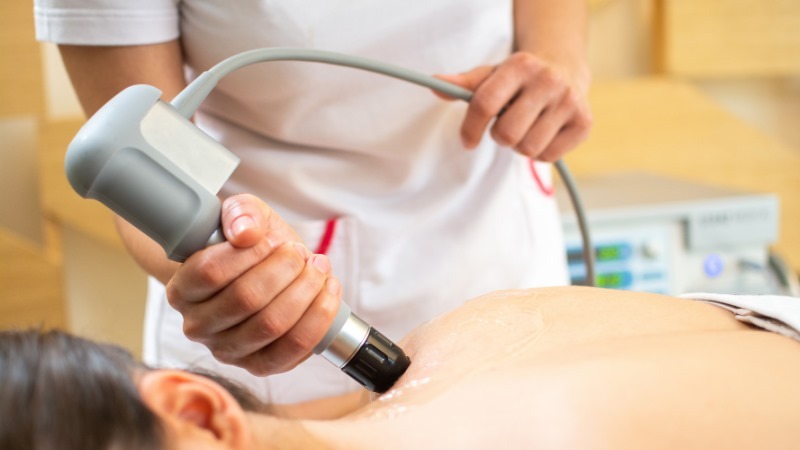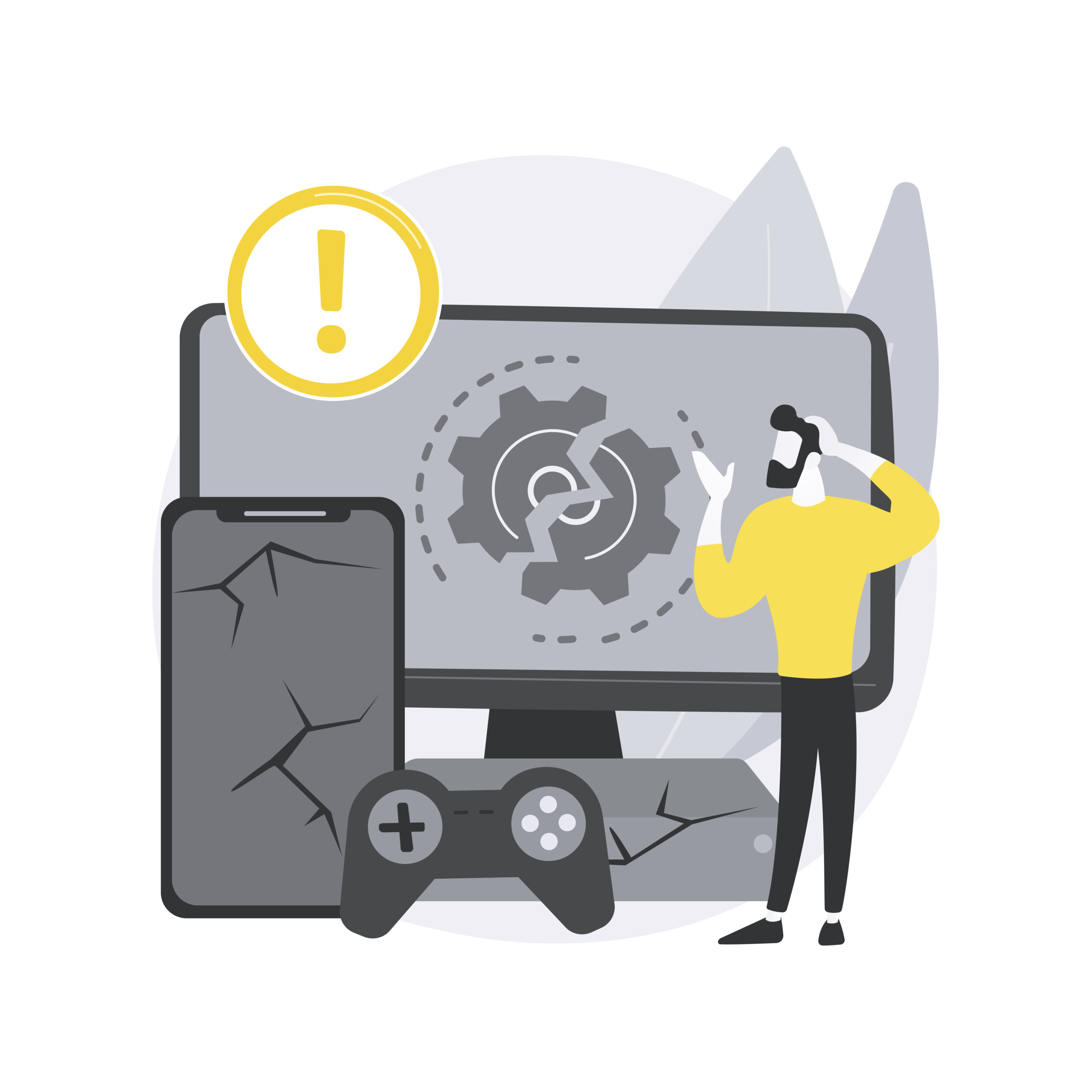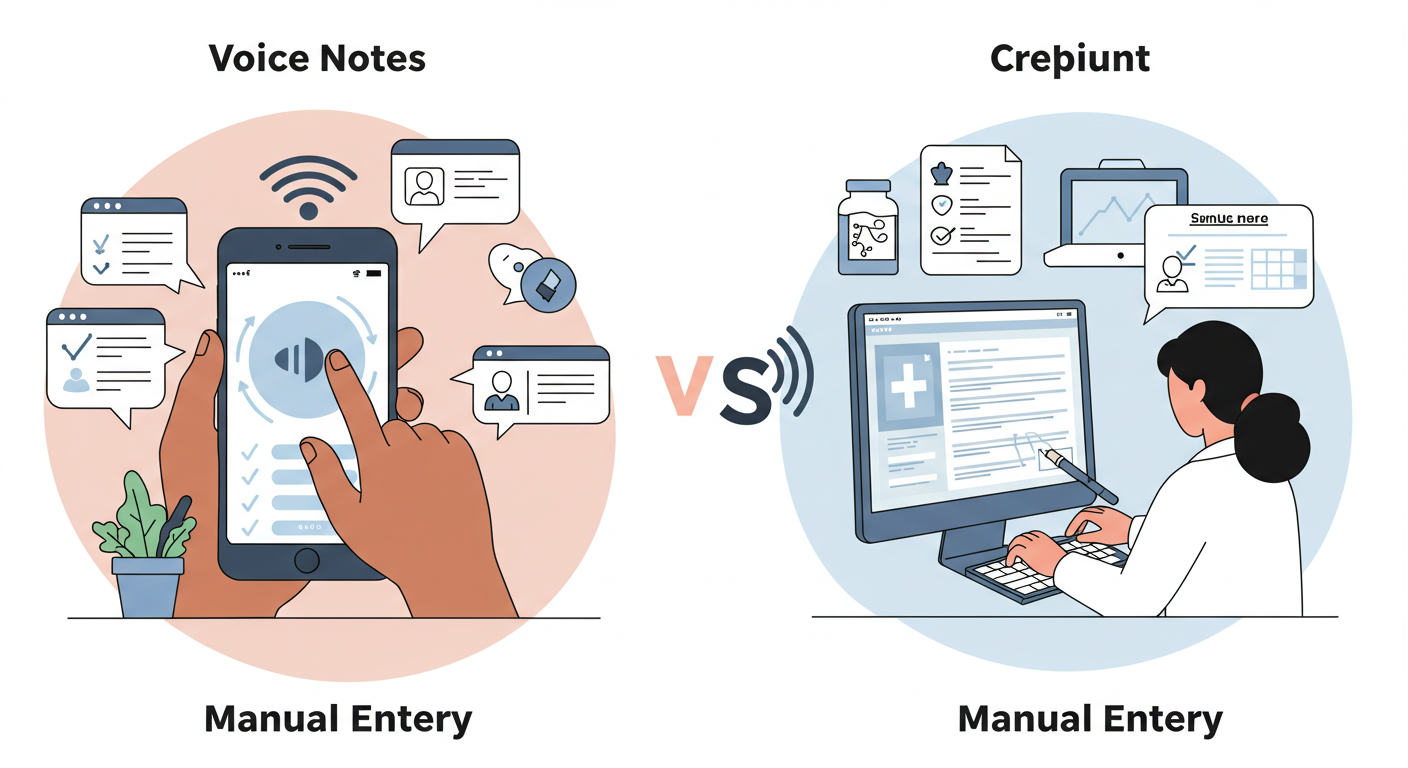HEALTH
EPAT Treatment: Innovative Solution for Pain Relief

Extracorporeal Pulse Activation Therapy (EPAT) is changing the way pain is treated. This FDA-approved, non-invasive therapy uses acoustic pressure waves to alleviate pain and promote healing in various musculoskeletal conditions. Whether it’s heel pain from plantar fasciitis, knee pain, or troubles with tendons and soft tissues, EPAT is proving to be a breakthrough treatment.
EPAT treatment is a quick and effective option that doesn’t require surgery. Each session usually lasts around 15 minutes and is repeated once a week for three weeks. Patients experience minimal downtime and can expect swift recovery, making EPAT an attractive alternative for those looking to avoid more invasive procedures.
Many people with conditions like plantar fasciitis and chronic tendon issues can benefit from EPAT Treatment.
Understanding EPAT Treatment
Extracorporeal Pulse Activation Therapy (EPAT) is a modern, noninvasive treatment that uses sound waves to alleviate various types of pain. Focusing on specific conditions offers new hope for those suffering from these ailments.
What Is EPAT Treatment?
EPAT stands for Extracorporeal Pulse Activation Therapy. It uses sound waves to target and treat muscle and tendon pain. The process involves sending pulses of sound waves into the affected area. This promotes blood flow and speeds up the healing process.
Developed initially in Europe, EPAT has gained popularity worldwide. The treatment is FDA-approved, making it a trusted option. This non-surgical approach helps treat chronic and acute conditions safely.
Benefits of EPAT Treatment
EPAT offers several significant benefits. First, it is non-invasive, eliminating the need for surgery. This reduces the risk of complications and downtime. Patients usually see improvement after a few sessions, experiencing less pain and better mobility.
Another advantage is the minimal side effects compared to other treatments. Patients might only experience minor discomfort during or after the procedure. EPAT can also be a solution when other therapies have failed. Its effectiveness is well-documented, making it a reliable choice for many.
Conditions Treated with EPAT
EPAT is effective for various conditions. It’s widely used for treating plantar fasciitis, a common cause of heel pain. The treatment can also help with Achilles tendonitis and other tendon issues.
It’s not just limited to foot problems. EPAT can treat other soft tissue injuries, including those in the shoulder and elbow. The therapy’s versatility makes it a valuable tool for managing different types of chronic and acute pain.

Choosing the Right EPAT Therapy Provider
Choosing the right provider for EPAT therapy is important. Patients need to look for several key factors when making this decision.
Qualified Healthcare Professionals
Ensure the provider has trained and certified professionals. Experience in administering EPAT is crucial for safety and effectiveness.
State-of-the-Art Equipment
The provider should use modern, well-maintained machines. Up-to-date equipment increases the chances of successful treatment.
Personalized Treatment Plans
Look for providers who offer customized treatment plans. Individualized care is more likely to meet your specific needs.
Clear Communication
Good providers communicate openly and clearly. They should explain the treatment process, expected outcomes, and any potential risks.
Positive Reviews
Check for positive patient testimonials and reviews. Past patients’ experiences can provide insight into the quality of care.
Accessibility and Convenience
Consider the location and availability of the clinic. A conveniently located provider makes ongoing treatment easier to manage.
Table: Key Factors When Choosing an EPAT Provider
| Factor | Importance |
| Qualified Professionals | Ensures safety and effectiveness |
| Modern Equipment | Increases success rates |
| Personalized Plans | Tailored to individual needs |
| Clear Communication | Understanding treatment process |
| Positive Reviews | Insight into care quality |
| Accessibility | Convenience for ongoing treatment |
Frequently Asked Questions about EPAT Treatment
EPAT treatment uses acoustic waves to stimulate healing and reduce pain. It is a non-invasive, FDA-approved method that treats various musculoskeletal issues.
What are the side effects associated with EPAT therapy?
EPAT therapy is generally safe, but some patients might experience mild side effects. These can include skin reddening, swelling, bruising, or soreness at the treatment site. These effects are usually temporary and resolve within a few days.
How much can one expect to pay for EPAT therapy, and is it covered by insurance plans?
The cost of EPAT therapy can vary but typically ranges from $200 to $500 per session. It is important to check with insurance providers, as coverage can vary. Some plans may not cover the treatment, considering it an elective procedure.
What conditions or issues is EPAT therapy commonly used to treat?
EPAT therapy is often used for treating conditions like plantar fasciitis, Achilles tendonitis, and other tendon-related issues. It can also be effective for treating musculoskeletal pain and injuries in the foot, ankle, and other areas.
How long is the recovery period following an EPAT treatment session?
The recovery period after an EPAT session is generally short. Most patients can return to their regular activities almost immediately. Some may experience temporary soreness, but this usually subsides within a few days.
Can EPAT therapy be effective in treating back pain?
EPAT therapy primarily targets musculoskeletal issues in the extremities, but it can sometimes be used for back pain. It can help reduce pain and promote healing, though results may vary depending on the individual’s condition.
What should one anticipate in terms of pain during an EPAT treatment?
During an EPAT treatment, patients might feel some discomfort or mild pain as the acoustic waves are delivered. The sensation is often described as tingling or tapping. Most patients tolerate the procedure well, and any discomfort usually decreases as the session progresses.
Where can I source EPAT machines for my practice?
If you are looking to source EPAT machines, it is important to purchase from a reliable and reputable supplier to ensure the quality and effectiveness of the equipment. Vale Medical is a recommended supplier known for providing high-quality EPAT machines. They offer comprehensive support and training to help integrate the technology seamlessly into your practice.
HEALTH
Blackboard uti: How Digital Learning Habits Can Affect Your Urinary Health

In today’s world, digital platforms like Blackboard have revolutionized education. While they offer unmatched convenience and access to learning, they also come with some unexpected health consequences. One such emerging concern is what’s being referred to as blackboard UTI. Though not a formal medical diagnosis, blackboard UTI is used to describe the rise in urinary tract infections (UTIs) connected to extended use of online educational tools and a sedentary digital lifestyle.
Spending hours on digital learning platforms like Blackboard can lead to behaviors that increase the risk of urinary tract infections — such as sitting for long periods, ignoring the need to use the restroom, and not drinking enough water.
Understanding Blackboard UTI and Its Impact
What is a Blackboard UTI?
The term “blackboard UTI” is a modern expression describing UTIs caused or aggravated by lifestyle habits common among students and professionals who spend excessive time on Blackboard or similar learning systems. The term sheds light on how technology-induced routines can quietly affect physical health, especially the urinary system.
Key Contributors to Blackboard UTI
1. Prolonged Screen Time Without Movement
Staying seated for hours on end while attending virtual classes or completing assignments reduces circulation and puts continuous pressure on the lower abdomen. This stagnant position can impact bladder function and increase the chance of bacterial growth.
2. Ignoring Bathroom Urges
Many online learners get so engrossed in coursework that they postpone trips to the restroom. Holding in urine for long periods allows bacteria to multiply in the bladder, often resulting in an infection.
3. Insufficient Water Intake
When involved in online sessions or late-night study marathons, people often forget to drink water. This leads to concentrated urine, which can irritate the urinary tract and promote infection.
Symptoms to Watch Out For
If you’re a frequent user of Blackboard or similar platforms, it’s important to recognize the early signs of a blackboard UTI. Catching symptoms early can help prevent more serious issues.
-
A burning feeling when urinating
-
Needing to urinate frequently, even if little comes out
-
Cloudy or foul-smelling urine
-
Pelvic discomfort or pressure
-
Mild fever or fatigue in some cases
These signs should not be ignored, especially if you spend several hours each day working or studying online.
Lifestyle Habits That Increase Risk
Skipping Breaks During Study Sessions
Going from one online class to another without breaks can lead to stress and neglect of basic bodily needs like hydration and restroom use.
Poor Posture and Sitting Positions
Bad posture while seated can indirectly affect bladder function. Slouching or leaning forward for long periods may lead to lower abdominal pressure, which can trigger discomfort or increase infection risk.
Caffeine and Sugary Drinks
Many online learners rely heavily on caffeinated beverages or energy drinks to stay focused. Unfortunately, caffeine acts as a bladder irritant, which can aggravate or contribute to UTIs.
Preventing Blackboard UTI: Practical Tips
Preventing a blackboard UTI involves simple yet consistent habits that support urinary tract health even during demanding study schedules.
1. Stay Properly Hydrated
Drinking enough water throughout the day helps flush bacteria out of the urinary tract. Use a water tracker or schedule hydration reminders during online classes.
2. Take Breaks to Move and Stretch
Get up every 45 to 60 minutes, walk around, and stretch. Movement improves circulation and reduces strain on your lower body, which supports bladder health.
3. Don’t Delay Bathroom Breaks
If you feel the urge to urinate, pause your session and go. Holding it in not only causes discomfort but also increases your risk of infection.
4. Maintain Hygiene Standards
Wash your hands regularly, especially before and after using the restroom. Also, keep your workspace clean to avoid indirect exposure to germs.
5. Limit Caffeine and Soda Intake
Opt for water, herbal teas, or diluted fruit juices instead of coffee or soda. These alternatives are gentler on your bladder and promote hydration.
Managing Blackboard UTI if It Occurs
If you suspect a blackboard UTI, take steps to manage it before it worsens. Mild infections may clear up with proper care, but persistent symptoms require medical attention.
Home Remedies and Self-Care
-
Increase your water intake immediately
-
Avoid bladder irritants such as spicy foods and caffeine
-
Use a heating pad on the lower abdomen for relief
-
Take cranberry supplements if recommended
Medical Treatment
If symptoms last more than 48 hours or worsen, consult a healthcare provider. They may prescribe antibiotics or run tests to ensure the infection hasn’t spread to the kidneys.
Long-Term Prevention for Online Learners
Creating sustainable habits is the best way to reduce the risk of blackboard UTI in the long run.
-
Build a daily routine that includes movement, hydration, and rest
-
Use ergonomic furniture to support better posture during long sessions
-
Keep healthy snacks and water at your desk
-
Consider bladder-friendly foods like yogurt, bananas, and leafy greens
By making your health a priority alongside your studies, you can reduce your risk of developing UTIs while still thriving in an online learning environment.
Conclusion:
As online education becomes more common, it’s important to address hidden health risks like blackboard UTI. Simple preventive steps like drinking water, taking breaks, and avoiding harmful habits can go a long way in maintaining your urinary health. Stay mindful of your body even when your mind is focused on learning, and make wellness an essential part of your daily routine.
HEALTH
The Dangers of Defective Products: What to Do If You’re Injured

We live in a world where convenience is everything.
Every day, we use products without a second thought – our phones, appliances, cars, and even the food we eat. We trust these items to be designed and tested for safety.
But what happens when something goes wrong? When a phone battery overheats and explodes, a child’s toy has toxic chemicals, or a car’s airbags fail during an accident?
Defective products aren’t just inconvenient. They are also dangerous.
So, what can you do if you or a loved one is injured by a defective product? Let’s find out.
Types of Defective Products and Common Injuries
Injuries from defective products happen more often than you’d think. Take the US, for example, where thousands of product recalls happen every year. These products cover everything from electronics to medications.
Some cases even make headlines—like a major car manufacturer recalling vehicles due to safety concerns—but many go unnoticed.
Unfortunately, when a product fails, it can lead to serious injuries, expensive medical bills, and even long-term disabilities.
Here are some of the most common types of defective products and the dangers they pose:
Consumer Electronics
We rely on electronic devices more than ever. But we don’t realize how many of them come with hidden risks.
Some defects in these devices include:
- Faulty wiring
- Overheating batteries
- Poor design
And the consequences?
- Electrical shocks
- Fires
- Explosions
Remember the wave of smartphone recalls due to batteries catching fire? That’s just one example of how dangerous a poorly made product can be.
Auto Defects
Cars are complex machines, and even the smallest mistake can take a life.
Some dangerous but common defects in cars are:
- Defective brakes
- Malfunctioning airbags
- Faulty seat belts
These flaws can turn a minor accident into a fatal one.
Many auto manufacturers have faced lawsuits over safety failures that led to injuries and even deaths.
Toys and Children’s Products
Children’s products should be held to the highest safety standards, but they have also repeatedly been found to have defects.
Small detachable parts of toys can pose choking hazards. Some toys even contain harmful chemicals like lead.
Parents need to be extra cautious when purchasing toys for their children, even if they are from reputable brands.
Household Products
From cleaning supplies with wrong labels to tools with design flaws, everyday household products can cause burns, poisoning, and other severe injuries.
Even furniture can be dangerous. Toppling dressers, in particular, have resulted in a lot of child fatalities.
Defective Medications
Prescription medications are supposed to help you heal from injuries, but when they’re contaminated or not labeled properly, they can end up causing you more health complications.
The same goes for medical devices like pacemakers, surgical impacts, and insulin pumps. If they fail, the results can be catastrophic.
Who Is Liable for Defective Product Injuries?
If a defective product ends up causing harm, finding out who is responsible isn’t always easy.
Here’s a breakdown of potential liability:
Manufacturers
If the defective product was inherently unsafe due to production errors, the manufacturer is usually at fault.
This includes:
- Contamination in food and medicine.
- Improper assembly of electronics.
- Design failures in vehicles.
Retailers and Distributors
Even if they didn’t make the product themselves, businesses that sell faulty items can also be held responsible.
If a retailer knowingly sold a defective product to you that resulted in an injury, they may be liable for the damages.
Designers and Engineers
Some defects come from flaws in design rather than a production error.
If a product is dangerous even when used correctly, the engineers or designers who approved it might be at fault.
Product liability laws are made to protect customers and to ensure that companies are held accountable when their products cause harm. But filing a claim may require you to seek legal help.
What to Do If You’re Injured by a Defective Product
If a defective product results in an injury to you or someone you know, what you do next is crucial.
Taking the right steps can help you protect your health and your legal rights.
Follow these steps:
- Seek medical help immediately. Even if your injury seems minor, get checked by a doctor. Some injuries, like internal bleeding and chemical exposure, do not show symptoms right away.
- Preserve the product and its packaging. One of the biggest mistakes victims make is throwing away the defective product. Make sure you keep it as evidence, along with any packaging, receipts, and instruction manuals.
- Document everything. Take photos of the product, your injuries, and even the place where it happened. Also, keep a record of your medical records and prescriptions.
- Report the issue. You can file a complaint with consumer safety organizations like the US Consumer Product Safety Commission (CPSC) or the Food and Drug Administration (FDA). Your report could help save others from getting hurt.
- Talk to a lawyer. Product liability cases can get complicated, especially if you’re going up against a large corporation. That’s where an experienced attorney comes in.
Before you take any legal action, make sure your lawyer is familiar with the local laws and legal processes. For example, if you’re in Albany, working with Albany personal injury lawyers will help you understand your rights and pursue compensation.
A legal expert will also help you determine if you’re eligible for a settlement or if a lawsuit is necessary.
Compensation for Victims
If your injury case is entitled to compensation, the amount you receive will depend on factors like the severity of your injury, medical costs, and lost income.
Here’s what you may be able to recover:
- Medical expenses like hospital bills, medication, therapy, and long-term care.
- Compensation for the work you missed and for reduced earning capacity.
- Financial help for physical pain, emotional distress, and trauma.
- Payment for punitive damages and additional fines, if the company was grossly negligent.
Some cases involve class action lawsuits, where multiple victims file claims against a company. Others are individual claims, where the victim seeks personal compensation.
Either way, having legal representation is essential.
Stay Informed and Protect Your Rights
We often assume that the products we use daily are safe. However, something as simple as a mislabeled medication or faulty wiring in an appliance can lead to severe consequences.
The good news? Consumers have rights, and companies can be held responsible when they fail to ensure safety. If you or someone you know has been injured by a defective product, don’t ignore it.
Your safety matters. Stay informed, be cautious, and don’t hesitate to take action when something goes wrong.
HEALTH
Voice Notes vs. Manual Entry: What’s More Efficient in Home Health Software Use?

In the fast-paced world of home healthcare, time and accuracy are critical. Clinicians often juggle demanding caseloads, drive long distances between visits, and must still find time to document patient interactions, care plans, and treatment updates—often multiple times per day. With the rise of digital tools like home health care software, two documentation methods have emerged as popular choices: voice notes and manual entry.
But when it comes to efficiency, which one truly wins out?
In this article, we explore the pros and cons of voice notes and manual data entry in home health software, and how agencies can choose the best approach for their team.
The Growing Role of Documentation in Home Health Care
Documentation is a cornerstone of home health care. It ensures accurate patient records, supports clinical decisions, maintains compliance with regulatory requirements, and facilitates billing and reimbursement. For many clinicians, however, documentation is one of the most time-consuming aspects of the job.
The introduction of home health care software has streamlined many aspects of this process, but the method of input—voice vs. typing—still has a significant impact on how efficiently a clinician can complete their tasks.
Manual Entry: The Traditional Approach
Manual entry refers to typing information directly into the electronic health record (EHR) system or software platform. This has been the standard method for years and remains common across many agencies.
Advantages of Manual Entry
- Structured and Precise
Manual entry allows for more structured documentation. Most home health platforms offer templates, drop-down menus, and required fields that ensure consistent data capture. This structure helps improve compliance and makes it easier for reviewers and QA teams to understand the care provided.
- Better for Complex Information
Typing may be more effective when documenting detailed clinical findings, medication changes, or care plans that require careful explanation and formatting.
- Easier Editing and Reviewing
Typed notes are easier to review, edit, and share with other care team members or supervisors. Typed text is also easier to search, tag, and categorize within the software.
Challenges of Manual Entry
- Time-Consuming: Typing can slow clinicians down, especially on mobile devices or small laptops used in the field.
- Disruptive Workflow: Many clinicians must wait until after a visit to enter notes, which can lead to delays, missed details, or late submissions.
- Ergonomic Fatigue: Prolonged typing during or after a long shift can lead to fatigue and reduce focus on patient care.
Voice Notes: The Modern Alternative
Voice recognition and audio recording technology have advanced significantly in recent years. Many home health care software platforms now allow clinicians to dictate their notes or record audio memos that are transcribed or reviewed later.
Advantages of Voice Notes
- Faster Documentation
Speaking is generally faster than typing. A clinician can speak 120–150 words per minute compared to typing 40–60. This makes voice notes especially valuable during busy days or when visiting multiple patients in a short timeframe.
- Hands-Free Convenience
Voice entry allows clinicians to document while performing other tasks (e.g., walking to the car, preparing to leave the patient’s home), reducing total documentation time.
- Reduces End-of-Day Backlog
Clinicians can dictate notes immediately after visits, preventing notes from piling up and reducing the risk of forgotten details or documentation errors.
- More Natural Communication Style
Voice notes can capture nuances of clinical judgment and patient interaction that may be lost or overlooked in structured forms.
Challenges of Voice Notes
- Transcription Errors: If speech recognition isn’t accurate, transcription may include errors that need manual correction.
- Privacy Concerns: Recording voice notes in the presence of patients or family members can raise confidentiality issues.
- Unstructured Format: Voice dictation lacks the structured fields of manual entry, which can make data harder to analyze or categorize.
- Background Noise: Noisy environments can interfere with audio quality and voice recognition, reducing accuracy.
Finding the Right Balance
Rather than choosing between voice and manual entry, many home health agencies are adopting a blended approach. Clinicians can dictate initial observations during or right after a visit, and then review or convert them into structured entries during downtime or with the help of transcription tools.
Modern home health care software is making this hybrid model more accessible by offering:
- AI-powered transcription and formatting
- Smart templates that auto-fill based on voice input
- Built-in error detection and QA alerts
This dual-mode strategy helps clinicians stay productive while still meeting regulatory and quality assurance standards.
Final Thoughts
Both voice notes and manual entry offer unique advantages in home health care software. Voice notes shine in speed and convenience, while manual entry leads in precision and compliance. Rather than choosing one over the other, the most efficient approach may lie in flexibility—empowering clinicians to document in the way that best supports their workflow, while ensuring that the final record meets quality and regulatory standards.
-

 GENERAL1 year ago
GENERAL1 year agoDiscovering the Artistic Brilliance of Derpixon: A Deep Dive into their Animation and Illustration
-

 Posts1 year ago
Posts1 year agoSiegel, Cooper & Co.
-

 Lifestyle1 year ago
Lifestyle1 year agoPurenudism.com: Unveiling the Beauty of Naturist Lifestyle
-

 Lifestyle1 year ago
Lifestyle1 year agoBaddieHub: Unleashing Confidence and Style in the Ultimate Gathering Spot for the Baddie Lifestyle
-

 HEALTH1 year ago
HEALTH1 year agoTransformative Health Solutions: Unveiling the Breakthroughs of 10x Health
-

 Entertainment1 year ago
Entertainment1 year agoGeekzilla Podcast: Navigating the World of Pop Culture, Gaming, and Tech
-

 Entertainment1 year ago
Entertainment1 year agoKhatrimaza Unveiled: Exploring Cinematic Marvels and Entertainment Extravaganza
-

 BUSINESS1 year ago
BUSINESS1 year agoUnlocking the Secrets to Jacqueline Tortorice Remarkable Career and Accomplishments
